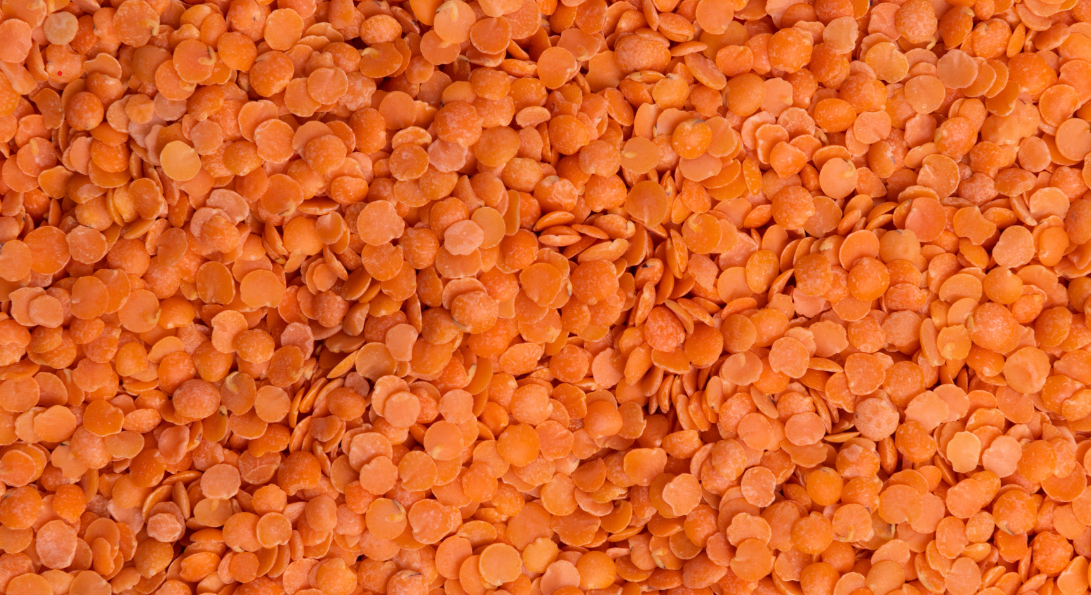
Lentil, one of the oldest crops, originates from the Near East and Mediterranean regions. This small, green annual herb features a flattened pod and lens-shaped seeds. Highly nutritious, lentils are rich in B vitamins, iron, and protein, making them an excellent meat alternative. They also contain fiber for gut health and phytochemicals that protect against chronic diseases. Cultivated primarily in Uttar Pradesh, Madhya Pradesh, Bihar, West Bengal, Chhattisgarh, and Jharkhand, the Bundelkhand region contributes about 25% to the nation's lentil production.
Soil and Climate
-
Lentil cultivation spans across a diverse range of soils, encompassing light loamy sand to heavy clay soils in northern regions, and moderately deep, light black soils in Madhya Pradesh and Maharashtra.
-
The ideal temperature for its growth and development falls within the range of 15 to 25°C.
Varieties
Small-seeded lentil varieties resistant to rust include PL 406, PL 639, PL 4, and PL 4147. Bold-seeded varieties resistant to both rust and wilt are L 4076, LH 84-8 DPL 15, IPL 406, DPL 62, and JL 3. Recommended varieties for the northeastern region include HUL-57, KLS 218, Shalimar Masoor 1, Subrata, and Malika.
Sowing Time
The seeds of lentils are typically sown in the second fortnight of October in rainfed conditions. However, in irrigated areas, they can be sown in the first week of November. In late-sown conditions, the seeding can be extended up to the second week of December.
Planting Method
-
Land preparation involves plowing once with a soil-turning plow after the Kharif crop harvest, followed by cross-harrowing and planking. Raised bed planting is favored over flat-bed sowing.
-
Lentil is typically grown as a rainfed crop during the rabi season after rice, maize, or pearl millet, and can be intercropped with barley, linseed, mustard, and autumn-planted sugarcane.
-
Seed rates vary by variety, with small-seeded types needing 30-40 kg/ha and bold-seeded types requiring 50-60 kg/ha.
-
The recommended plant-to-plant distance for lentil cultivation is 10 cm, with a row-to-row spacing of 25 cm.
Nutrient and Weed Management
-
For lentil cultivation, the recommended fertilizer dose includes 20 kg of nitrogen (N), 40 kg of phosphorus (P), 20 kg of potassium (K), and 20 kg of sulfur (S) per hectare. In soils deficient in zinc, a soil application of 20 kg of zinc sulfate (ZnSO4) is advised, particularly under rainfed and late-sown conditions. Additionally, a foliar spray of 2% urea has been found to enhance yield.
-
Weed management involves one weeding 30-40 days after sowing or the application of weedicide, such as Pendimethalin at a rate of 1.0 kg/ha immediately after sowing, effectively controlling weeds.
Irrigation
Light irrigation at 40-45 days after sowing and during the pod-formation stage proves beneficial for lentil cultivation in the absence of winter rains.
Crop Protection
The major diseases of lentils include rust and wilt, which can be managed by using resistant varieties. Pest infestations are not a significant issue in lentils; however, in cases of aphid infestation, spraying Monocrotophos at 0.04% concentration is effective.
Harvesting
Lentil Pods are cut when they reach 80% of maturity with a sickle, followed by drying, and threshing. Yields average 8-10 quintals per hectare in rainfed conditions and 12-15 quintals per hectare under irrigation. With good management, yields can reach 20 quintals per hectare.
Uses
Lentils are versatile ingredients, perfect for enhancing soups, salads, and vegetarian dishes. Like rice, they absorb the flavors of whatever they're cooked with, making them incredibly adaptable.











